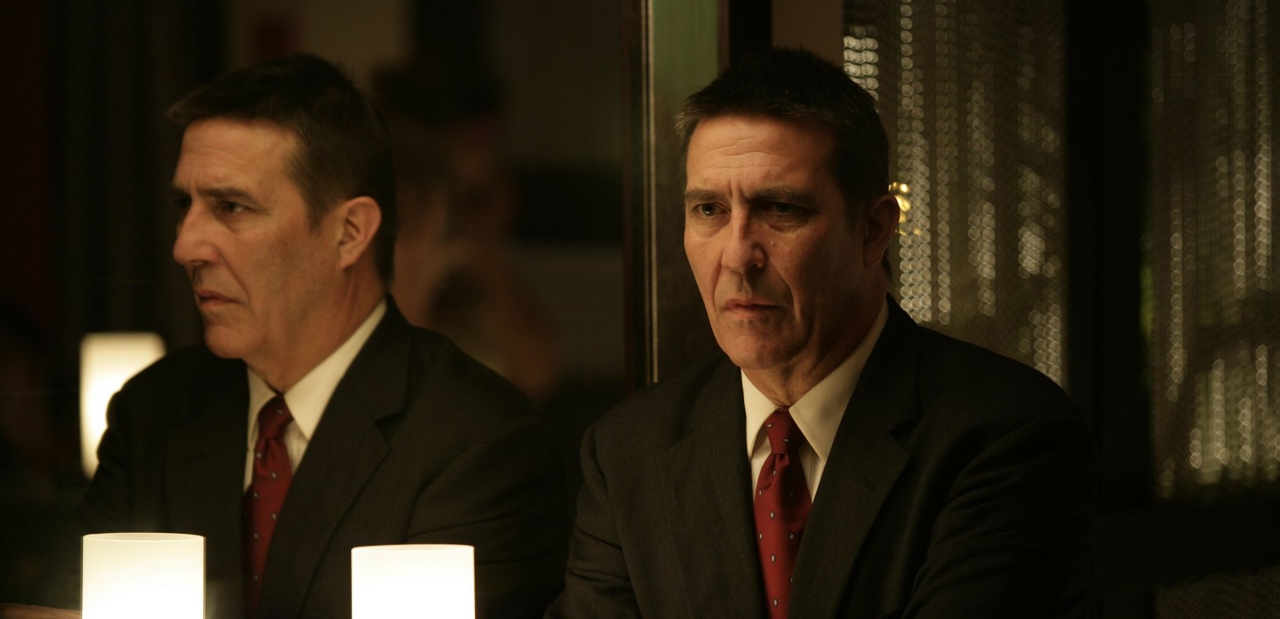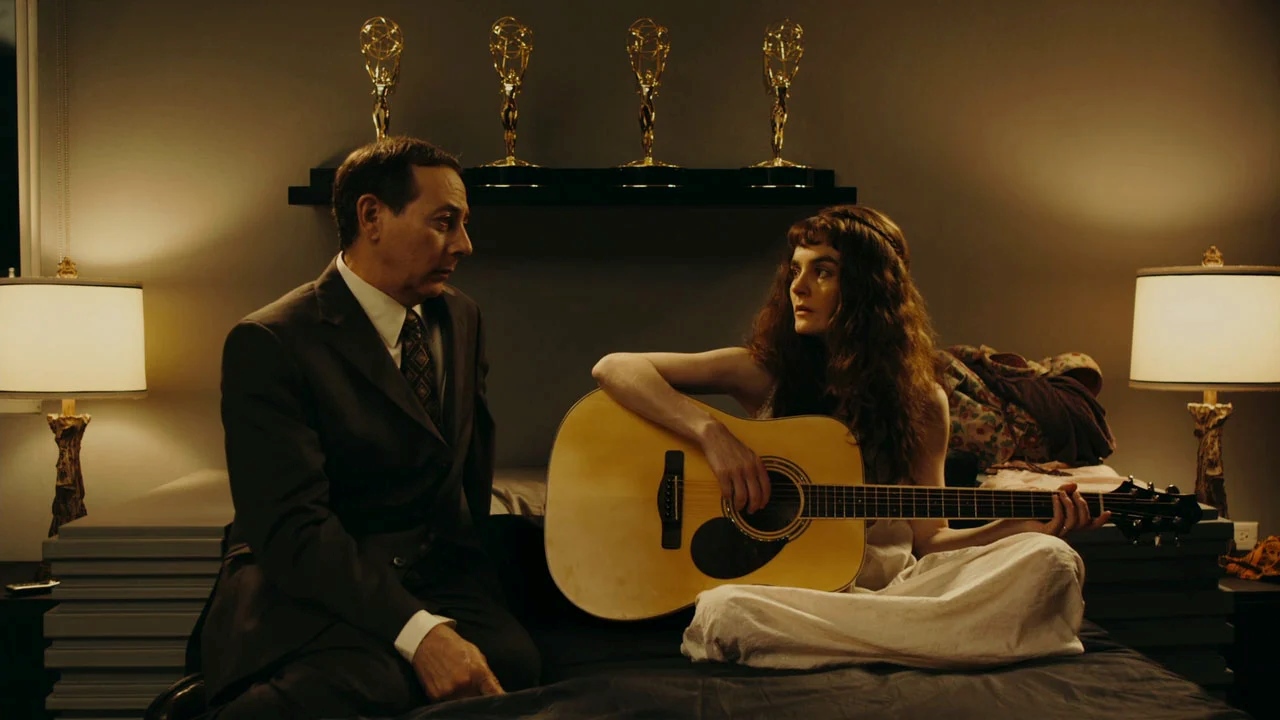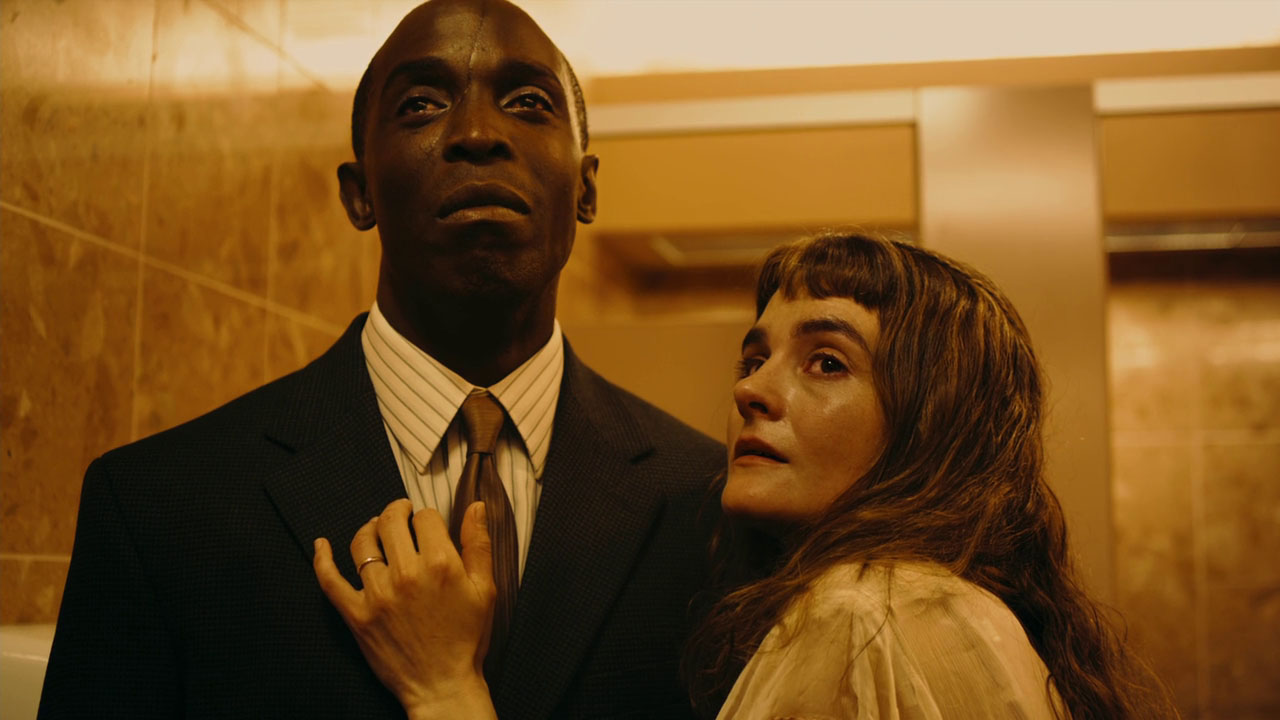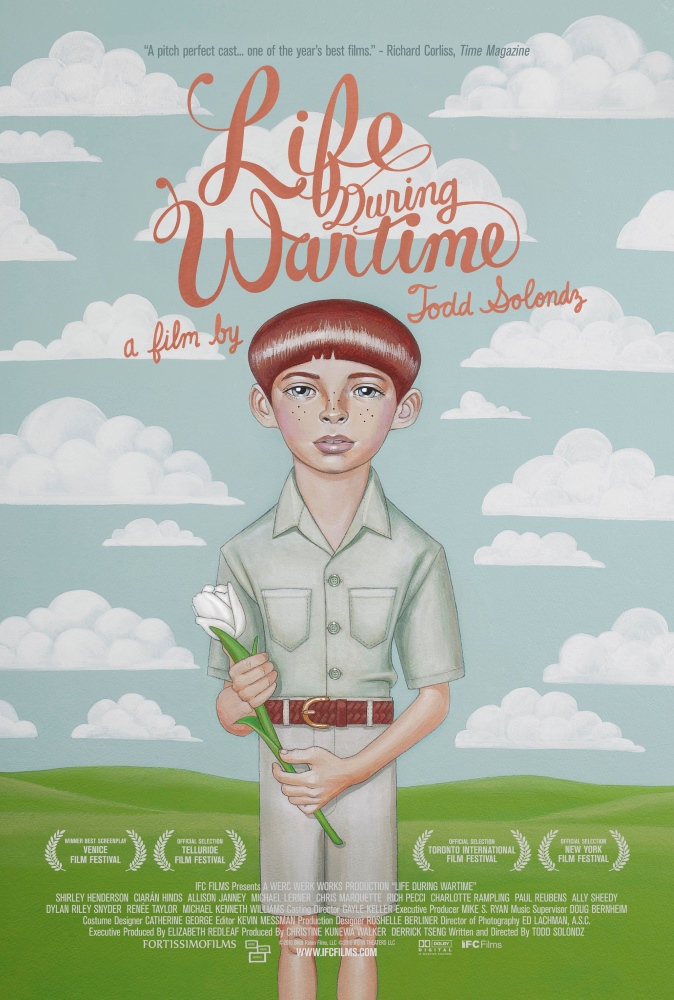USA. 2009.
Crew
Director/Screenplay – Todd Solondz, Producers – Christine Kunewa Walker & Derrick Tseng, Photography – Ed Lachman, Production Design – Roshelle Berliner. Production Company – Werc Werk Works.
Cast
Shirley Henderson (Joy), Ciaran Hinds (William Maplewood), Allison Janney (Trish Maplewood), Dylan Snyder (Timmy Maplewood), Michael Lerner (Harvey Wiener), Paul Reubens (Andy Kornbluth), Ally Sheedy (Helen Jordan), Chris Marquette (Billy Maplewood), Michael Kenneth Williams (Allen), Charlotte Rampling (Jacqueline), Rich Pecci (Mark Wiener), Renee Taylor (Mona Jordan), Emma Hinz (Chloe Maplewood), Rosalyn Ruff (Waitress)
Plot
Joy is living in New Jersey working to help rehabilitate of convicts. She has married former convict Allen who has turned his life around under her guidance. After finding that this is not quite the case, Joy flees to Florida to seek the counsel of her family. Along the way, she is haunted by the ghost of Andy, a former boyfriend who committed suicide and is still trying to get back together with her. Joy’s sister Trish has turned her life around after her husband Bill was sent to jail as a paedophile for raping young boys. Trish finds happiness with another divorced man Harvey and they make plans to marry. Her young son Timmy is approaching his bar mitzvah and is shocked to learn that his father is not dead as his mother has told him. He struggles with the notion of what a paedophile is. Meanwhile, Bill is released from prison and seeks to find the forgiveness of his family. After breaking into the apartment, he goes to visit his now teenage son Billy at university in Oregon.
Todd Solondz is one of the great, underrated modern American indie directors. Solondz first gained notice with his second film Welcome to the Dollhouse (1995), a painfully acute depiction of the life of a young girl. Solondz’s grand slam was Happiness (1998), one of the most powerful films of the 1990s in its disturbing portrait of the underbelly of American society, showing a series of interwoven character connections involving paedophiles, dirty phone callers and murderous spinsters. Happiness caused huge controversy and this did not lessen anywhat with Solondz’s subsequent films Storytelling (2001) and Palindromes (2004), dealing respectively with teenagers and their desire to portray their world around them and an underage girl who only wants to have a baby, and subsequent to this Dark Horse (2011) and Wiener-Dog (2016).
Todd Solondz’s films are way off the mainstream. They come with none of the easily identifiable pat moral wrap-ups and happy endings that most multiplex films do – even when venturing into the pro-life/pro-choice debate in Palindromes, Solondz refuses to caricature either side. There is nothing as clear cut as heroes or heroines in a Todd Solondz film – the more typical Solondz protagonist is someone who is operating under a series of self-delusions that receive a painfully abrupt encounter with reality throughout.
Solondz is constantly pushing his films into uncomfortable areas – regularly featuring paedophiles, underage sex and unflattering portraits of middle-class families and race relations – that do not exactly make him the darling of the awards set (Happiness, for instance, was rejected as distasteful by the normally all-embracing Sundance Festival and then dumped by its original distributor). Todd Solondz’s films at once suggest a line-up of the gleeful perverts of John Waters’ films – all depicted with the indie sensibility and dark humour of a Hal Hartley.

Solondz has a habit of weaving the characters from his films into other stories suggesting that all his films take place in the same universe – Michael Lerner’s divorcee here is meant to be the father of Heather Matarazzo in Welcome to the Dollhouse, for instance, while Rich Pecci plays a grown-up version of her bullying brother there. Life During Wartime is a sequel of sorts to Happiness. It takes up the lives of the characters some ten years on, although all of them have been recast with different actors – Ciaran Hinds now plays Dylan Baker’s child molester as he is released from jail; Alison Janney takes up the role of his wife played by Cynthia Stevenson in the original; Shirley Henderson plays Joy, the watery and overly sensitive daughter played by Jane Adams; Ally Sheedy is now the self-absorbed writer sister played by Lara Flynn Boyle in the original; while Pee-Wee Herman himself Paul Reubens takes up the role of Joy’s boyfriend (Jon Lovitz) who committed suicide at the start of Happiness.
The most radical change is the character of Allen, played by Philip Seymour Hoffman in the original and recast here with Black actor Michael Kenneth Williams. In the slightly confusing opening scene in a restaurant, Williams seems to be about his usual obscene phone caller tactics but is now also outfitted with a background as a reformed ex-con and gangbanger that would seem a hard fit to square with Hoffman’s take on the character.
I love the dark underbelly of modern American life that Todd Solondz constantly uncovers. He has a penetratingly sharp ability to dig inside his characters in often unflattering ways. He is also one of the few contemporary American directors to get the business of black comedy down right. That said, I felt that Life During Wartime was probably his least interesting film to date. Happiness is not exactly high on the list of films out there that seem to be crying out for sequels – it seem savagely to the point and to say all it needed to in the running time it had. You can see where Solondz is coming from – there is the undeniable thought experiment that everyone engages in at some point where they wonder about the lives of the characters after the frame of the story finished. Whether the characters of Happiness were burning for an entire film devoted to this is another question altogether.

Life During Wartime works well enough on its own terms but only sporadically digs into the darkly brilliant territory that Happiness mined. Certainly, it is missing the shock element of scenes with Dylan Baker getting off to boy’s magazines in the back of a car or plotting to have his way with his son’s friends, or of Philip Seymour Hoffman whacking off while making his phone calls.
Certainly, Life During Wartime deals with its characters on a more mature level – while Happiness was about shocking us, this about asking how people deal with these things. There is a theme about people seeking redemption for the acts they have done. The question that every character seems to address in some way or another is whether to forgive or to forget and whether change, redemption and earning the forgiveness of others is ever achievable with Solondz seeming to weigh in on the pessimistic side.
One of the most vicious pieces of writing in any Todd Solondz film comes at the very end where the ghost of Michael Kenneth Williams appears to Shirley Henderson in a bathroom, enjoining her to commit suicide to prove that she loves him, even when she protests that she does not want to, he citing that it would be the equivalent of the changes that she asked of him.
The characters’ interactions are often sharp and potently written. However, there are only a couple of scenes where Life During Wartime digs towards the dark brilliance of Happiness. One of these is Ciaran Hinds’ encounter with an older woman in a bar (perfectly cast with Charlotte Rampling who permanently radiates the sense that she has been physically drained of all human kindness) who describes herself as a monster (we are never told why) and, after finding him robbing her purse, happily invites him to take everything. The other scene is Ciaran Hinds’ encounter with his now grown teenage son Billy (Chris Marquette) – a scene that holds a threatening tension between the two that feels as though anything could happen.

On the other hand, other typical Solondz moments feel clumsy – it becomes clunkily apparent from a mile away that the moment young Dylan Snyder goes to Allison Janney and asks about what a paedophile does and she answers in euphemistic terms about someone touching him, that this advice is going to get later misinterpreted and applied to her boyfriend Michael Lerner.
The performances are all worthwhile, although the main problem is coming to the film with the memory of Happiness where you are constantly comparing the characters here with the ones that you remember from the original. Irish actor Ciaran Hinds is very different in the role to Dylan Baker, playing with a stoically contained stolidity where Hinds certainly proves his vastly underrated potential as a leading man. The creepiest performance comes from Shirley Henderson who plays the part of Joy with the mannerisms and voice of a little girl yet seems made up with the face of a fifty year-old to thoroughly unnerving effect. There is a particularly strong and mature performance from Dylan Snyder as young Timmy.
Life During Wartime is included here for the character of Paul Reubens’ Andy who appears to Shirley Henderson throughout as a ghost begging to resume their relationship only to be rebuffed by her. At the very end, Michael Kenneth Williams also appears to Henderson as a ghost following his suicide.
The title Life During Wartime seems puzzling – Todd Solondz says that he took is from the Talking Heads song Life During Wartime (1979), which David Byrne apparently wrote in reference to various terrorist organisations of the 1970s. The term perhaps does refer to the current state of US political affairs obliquely, although Solondz never seems to engage with the film politically or address some of the issues raised. In interviews, he seemed to suggest that the term is figurative and refers to the war within the characters’ psyches.
Trailer here


